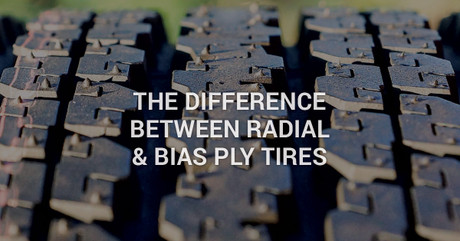The Difference Between Radial & Bias Ply Tires
Oct 10th 2017

If you’re in the market for new automobile or motorcycle tires, you may feel overwhelmed when it comes time to make a purchase decision. While there’s no question that radial tires dominate the car industry, you may be wondering about the pros and cons of bias ply tires as well. In this blog, we’ll take a closer look at the differences between these two types of tires so you can make an educated and informed decision.
RC Components is proud to be a leading manufacturer of motorcycle wheels and automobile tires online. We offer both aftermarket and custom wheels to help improve the speed and performance of your vehicle. Check out our Wheel Selector or browse our large array of wheels and parts online today!
Basic Tire Construction Terms
Before we take a look at the pros and cons of radial and bias tires, it’s important to understand exactly what these terms actually mean. While both tire types are round and hold air, how they are constructed is very different. Let’s take a look at some basic tire construction terms to help you understand the main differences.

Tread
This is the part of the tire you see that hits the road while you drive. In general, a smoother tread works better on dry and smooth surfaces, while chunkier tires work better when it comes to off-roading. Some street tread patterns are designed to do better in wet, off-road conditions.
Bead
The bead of a tire is the part of the tire that mates to the wheel. It is typically steel wire that is covered in rubber. The bead has a snug fit to the wheel which prevents the wheel from slipping rotationally in the tire.
Carcass
In the layman’s terms, this is the body of the tire that rests under the tread. While radial tires have reinforcing belts that run from bead to bead across the tire tread, bias-ply tires have belts that run from bead to bead at a specific angle.
Sidewall
The sidewall of a tire is that area that bridges the tread and bead. While it’s a very small portion of the tire, the sidewall is very important. It gives the tire much of its handling and load transfer characteristics. Typically, a shorter sidewall yields a stiffer sidewall, which tends to offer less flexibility. To a rider, this can mean better handling and turning but worse bump absorption and more difficult mounting.
Radial vs. Bias Ply Tires
With a bias-ply tire, the individual cords that make up each ply or layer within the carcass of the tire run at an angle across the body of the tire, from one bead to another. While the angle will vary from tire to tire, most run at a 45-degree angle relative to the face of the tire. There are additional plies with the tire that also run at opposing angles, or in bias, hence the term ‘bias ply.’ The cords that make up the plies in a bias ply tire are often constructed of nylon, rayon, polyester, and other non-metallic materials. The number of plies on the tire will have a direct impact on its load-carrying capacity as well as its resistance to impact breaks. Radial tires, on the other hand, have cords that run straight across each bead on the tire, which are perpendicular to the tread face, opposed to running at an angle. There are also additional plies that run at an angle with the tread face of the tire, so a radial tire might have only two layers within the sidewall but five or more in the tread face. Radial tires also have steel cords that add to its tough construction.
Pros of Bias Ply Tires
Due to their multiple layers, bias ply tires generally have an advantage when it comes to load-carrying capacity. These tires are also very puncture resistant, which should be a strong consideration if you like to off-road.
Pros of Radial Tires
Radial tires are ideal for car owners who have a need for speed. These tires are better when it comes to dissipating heat, and they are much more suitable for on-pavement rides. Unlike bias ply tires, radial tires offer advantages when it comes to cornering and turning as well.
If you’re shopping for automobile and motorcycle wheels online, be sure to shop RC Components today!

